
The Short Springbok was a two-seat, all-metal reconnaissance biplane produced for the British Air Ministry in the 1920s. All together six aircraft of the Springbok design were built but none entered service with the armed forces.

The ANEC I and ANEC II were 1920s British single-engine ultralight aircraft designed and built by Air Navigation and Engineering Company Limited at Addlestone Surrey. One was privately constructed in Brisbane, Australia.
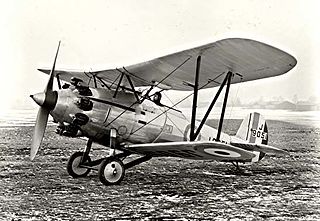
The Bristol Type 107 Bullpup was a British fighter aircraft built in the 1920s. It was not selected for squadron service and only the single prototype was built

The Bristol Bagshot, also known as the Type 95, was a prototype heavily armed British fighter built by the Bristol Aeroplane Company and first flown in 1927. Flight testing revealed serious problems, and the project was abandoned.

The Bristol Type 72 Racer was a British racing monoplane designed by Wilfrid Thomas Reid and built by the Bristol Aeroplane Company at Filton, England.

The Bristol Berkeley was built to a British government specification for a single-engine day or night bomber. Three of these two-seat biplanes were built, but no contract for further production was awarded.
The Bristol Type 92, sometimes known as the Laboratory biplane, was an aircraft built by the Bristol Aeroplane Company to address the differences between wind tunnel cowling models and full scale cowling for radial engines and was designed as a scaled-up version of a wind tunnel model aircraft. One was built and flew in the mid-1920s.
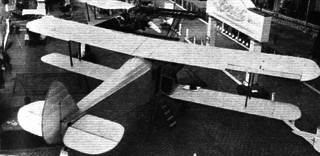
The Bristol Type 110A was a single-engine biplane for charter work, accommodating four passengers in comfort. Designed by Frank Barnwell and built at Filton Aerodrome by the Bristol Aeroplane Company. No orders were obtained and only one aircraft was built.
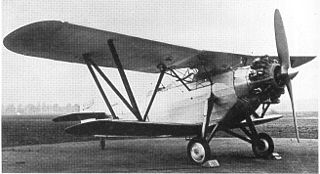
The Bristol Type 118 was a general-purpose military aircraft, a two-seat biplane built by the Bristol Aeroplane Company in the early 1930s, powered by a Bristol Mercury radial engine and aimed at overseas markets. The Type 120 was a Bristol Pegasus-engined variant entered into an Air Ministry competition and later used for armament tests. Two aircraft were built.

The Bristol Type 133 was a single-seat, single-engine monoplane fighter armed with four guns, using stressed-skin construction and with a retractable undercarriage. It was built by The Bristol Aeroplane Co. to meet Specification F.7/30. The single example crashed before the trials commenced.
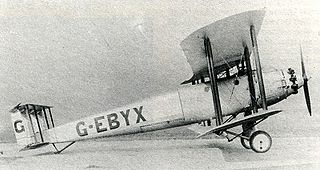
The Vickers Vellore was a large biplane designed as a freight and mail carrier, in single-engined and twin-engined versions, which saw limited use as freighters and long-range experimental aircraft. A final variant with a broader fuselage, the Vellox, was built as an airliner.

The Vickers Viget was Vickers' entrant for the first Lympne light aircraft competition, held in 1923. It was a single-seat, single-engined biplane with folding wings.

The Vickers Vagabond was Vickers' entrant for the second Lympne light aircraft competition, held in 1924. It was a conventional small biplane, with a very unusual method of trimming. It was eliminated from the trials at an early stage and only one was built.
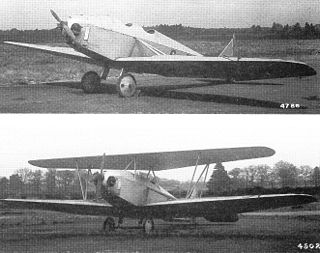
The Parnall Pixie was a low powered British single-seat monoplane light aircraft originally designed to compete in the Lympne, UK trials for motor-gliders in 1923, where it was flown successfully by Norman Macmillan. It had two sets of wings, one for cross-country flights and the other for speed; it later appeared as a biplane which could be converted into a monoplane.
The Beardmore Wee Bee was a single-engined monoplane built only once and specifically for the Lympne two-seat light aircraft trials held in the United Kingdom in 1924. This plane won the major prize.

The Cranwell CLA.4 was a single-engined two-seat inverted sesquiplane designed and constructed for the 1926 Lympne trials by an amateur group from RAF College Cranwell. Two were entered, though engine problems prevented one from taking part; the other was eliminated with a broken undercarriage. A third aircraft was amateur-built in Canada and flew until 1934.

The Cranwell CLA.3 was a parasol winged single-engined, single-seat British aircraft built to compete in the Lympne air races of 1925. It was designed and built by an amateur group drawn from staff and pupils at the RAF College Cranwell. Though it won one prize and set a Class record, only one CLA.3 was made.

The Cranwell CLA.2 was a single-engined two-seat biplane built by staff and students of RAF College Cranwell as an entrant to the Lympne Two Seater Light Aeroplane Trials of 1924. It won the reliability prize.
The RAE Hurricane was a single-seat, single-engined light monoplane designed and built by the Aero Club of the Royal Aircraft Establishment for the 1923 Lympne Motor Glider Competition. It was underpowered with an unreliable engine. Re-engined, it flew in many races, with first place in the 1926 Grosvenor Challenge Cup its greatest success.
The Westland PV.7 was a private venture submission to a 1930s British specification for a general-purpose military aircraft with two crew. It was a single-engined, high-wing monoplane of promise, but was destroyed early in official tests.

















